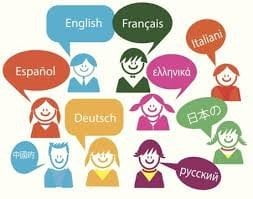 Commissioning a translation can be confusing, particularly if you have no knowledge of the language and no idea where to turn for help. Things can get even more confusing when you’re asked for certified copies of your translation. What is a certified translation? How do I have my translation certified? Will it cost more? If these are questions that you’re asking yourself, have a look at our guide to certified translation below.
Commissioning a translation can be confusing, particularly if you have no knowledge of the language and no idea where to turn for help. Things can get even more confusing when you’re asked for certified copies of your translation. What is a certified translation? How do I have my translation certified? Will it cost more? If these are questions that you’re asking yourself, have a look at our guide to certified translation below.
What is a certified translation?
A basic description of a certified translation, or official translation, is a translation that is accompanied by a statement which is signed by the translator that states that the translation is an accurate rendering of the original. The translations are also often stamped to show that the translator is a member of the officiating body. There are many different types of certified translation, with different costs involved, and you will need to know which one you need when commissioning a translation to make sure you don’t pay for a service you don’t actually need!
What are the different types of certification?
The type of certification varies depending on who is certifying the translation. The three main types are:
• Basic certification – the translation company certifies the translation. As a member of the Association of Translation Companies, Business Language Services (BLS) has certified translator status, which allows us to offer certified translation services. The translation is stamped to show that we are a member of the Association of Translation Companies and is accompanied by a letter, signed by the Managing Director that states that the translation is a true translation of the original. This certification is suitable for most official purposes.
• Affidavit – if your translation is going to be used in court you may need an affidavit. This is a statement that attests that the translation is a faithful translation of the original, and is signed in the presence of a solicitor.
• Legalisation – these translations are accompanied by a declaration that is signed by the translator in the presence of a notary. The declaration is also sealed by the notary. The documents are then sent off to the Foreign and Commonwealth Office for an apostille.
How do I know whether I need my translation certified?
Certified translations are usually only used for official purposes, and normally for legal documents such as certificates and contracts. So if you’re translating a marketing leaflet, for example, you won’t need to have this certified. If you’re unsure whether you need your translation certified, you should contact the body requesting the translation, whether it’s the Passport Office or the Cuban Embassy. They are best placed to tell you exactly what they need from you, which will help you choose the service that is best suited to their requirements. If you’ve contacted the relevant body but are still confused about which service you need, send the requirements on to us at BLS and we can help you choose the best service for you.
How much does this service cost?
The price of a certified translation varies depending on the service required and the length of the document. Here at BLS, the price for basic certification is included in the price for translation. However, affidavits and legalisation services are more costly, as you will also need to pay the solicitor’s or notary’s fees, and also for the translator’s time spent at the legal offices signing the declarations. There is no hard and fast rule when it comes to the cost of these services, but if you contact BLS we will discuss with the translator and the relevant solicitor to find out costs before you go ahead with your translation, so that you have a complete quote for all the services that you need and no unexpected additional costs.
Can you certify the original document?
As a translation company, we only certify that the translations are true to the original documents; we aren’t able to verify the accuracy of the original documents.
There’s a mistake in my original certificate, can you correct this in the translation?
When translations are certified, BLS confirms that it says exactly the same as the original document. Unfortunately, this means that if there’s a mistake in your original document, this has to be carried over to the translation. So, for example, if the Registrar misspelt your surname on your Italian marriage certificate we can’t correct this on the English translation, you would need to contact the Registrar and ask them to correct this for you. We understand that this is a frustrating problem, and we are always happy to amend any translated documents free of charge once the relevant body has issued you with a correct certificate. When translating from languages with different alphabets, such as Mandarin or Arabic, names often have to be transliterated and so the spelling can sometimes vary. If your certificate is in a language with a different alphabet, it is a good idea to send the Project Manager a list of how you would spell any names on the certificate, so that this can be passed on to the translator.
Still confused?
Not to worry, our Project Managers at BLS are experienced in dealing with certified translations and are always happy to answer your queries or help you choose which service would be best for you. Call us on 02920 667666 or email info@businesslanguageservices.co.uk.

